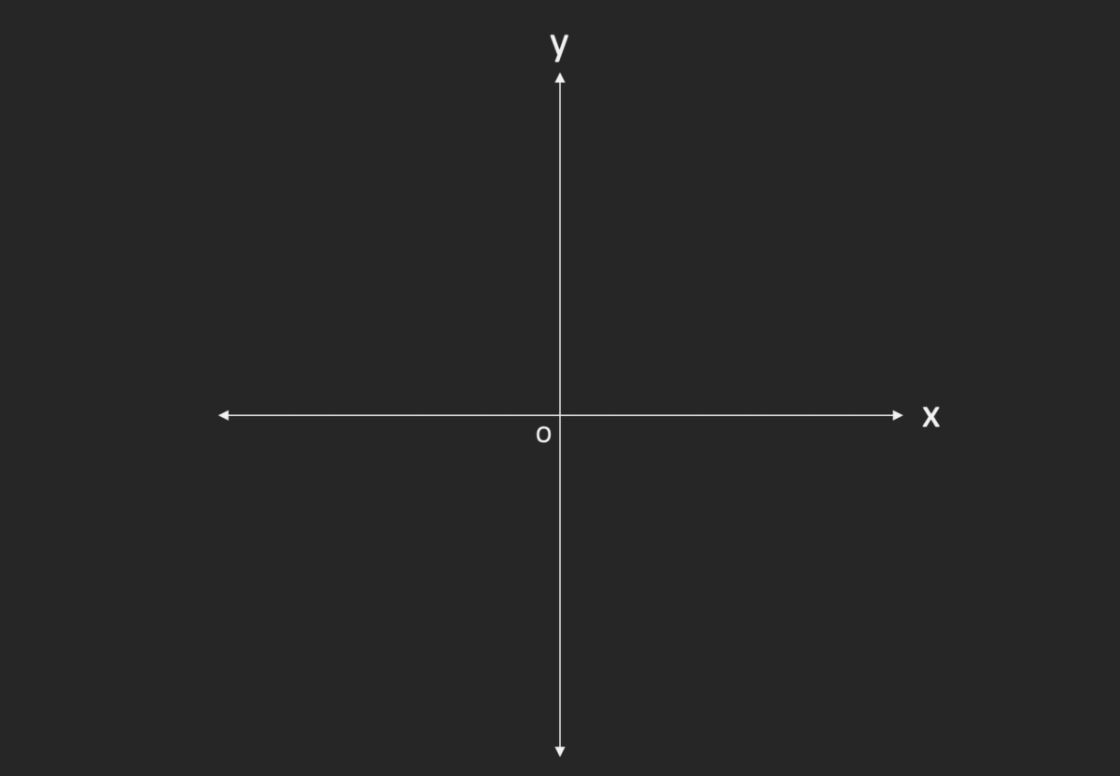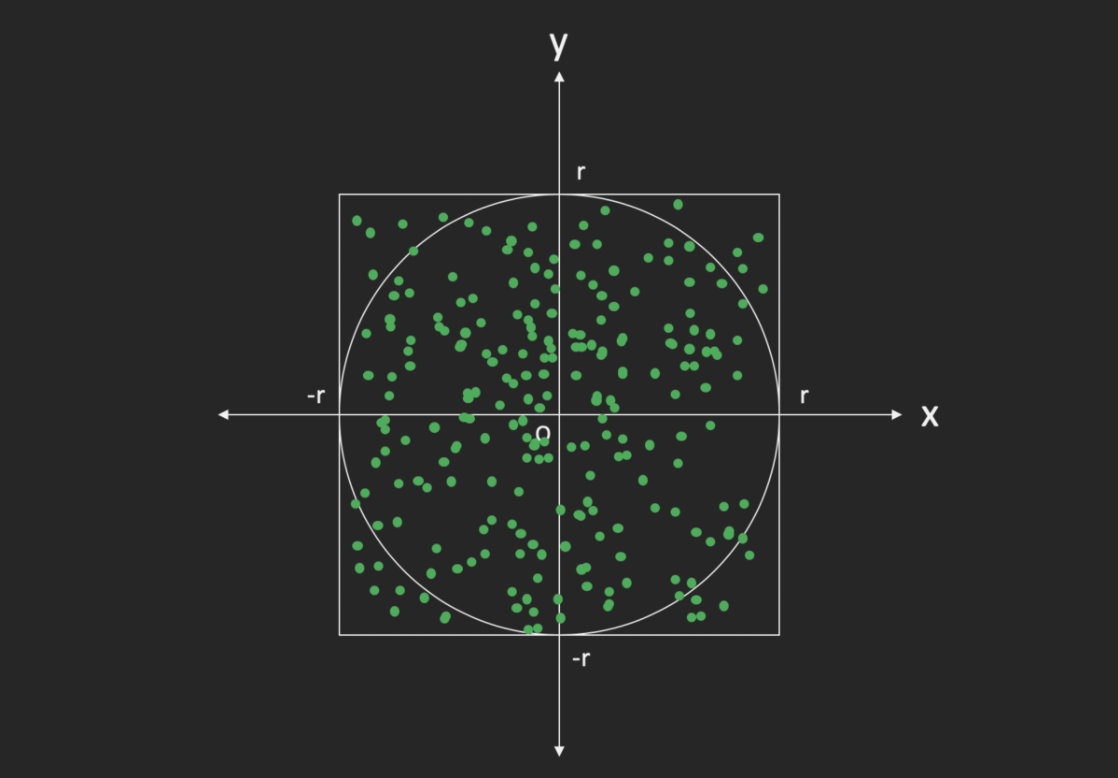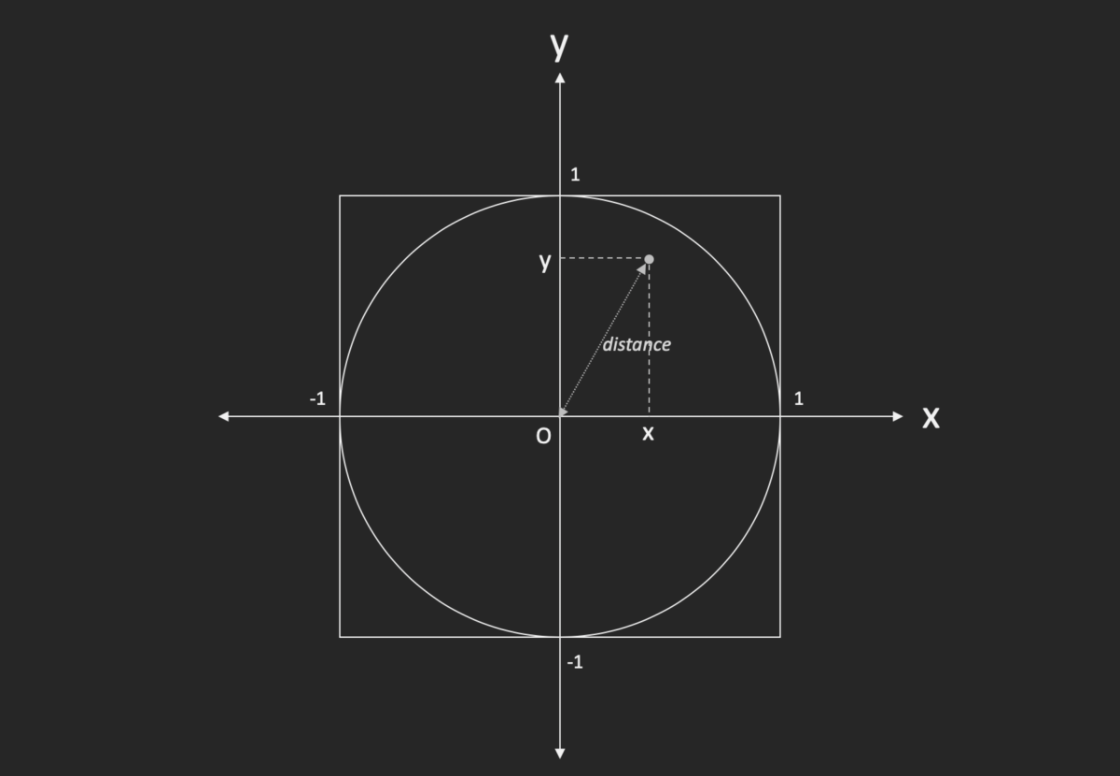Pythonの標準ライブラリrandomを用いて、確率論的に(厳密に言えばモンテカルロ法的に)円周率を推定してみたという話です。
(読了見込時間:4分)
考え方
ここに、原点Oを中心とする、半径rの円(Cとします)と、一辺が2rの正方形(Sとします)を描きます。
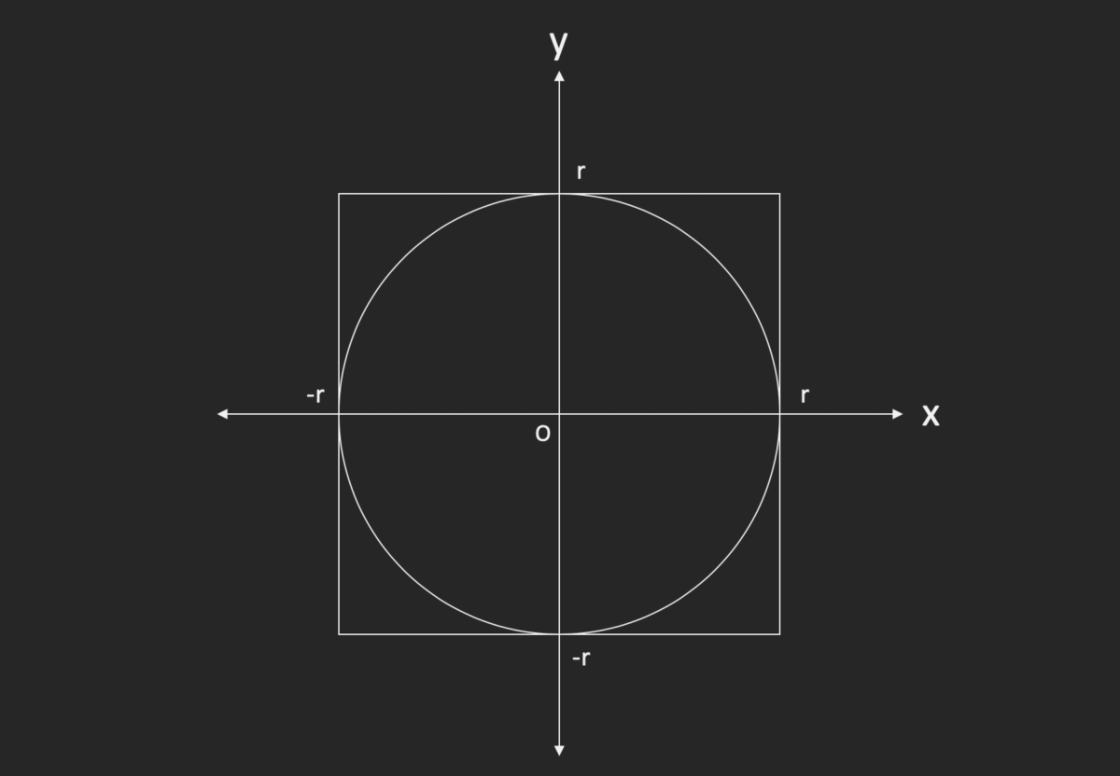
Sの中を埋め尽くすほど点を打ったとき、「Sの中にある点の数:Cの中にある点の数 ≒ Sの面積:Cの面積」と言えます。
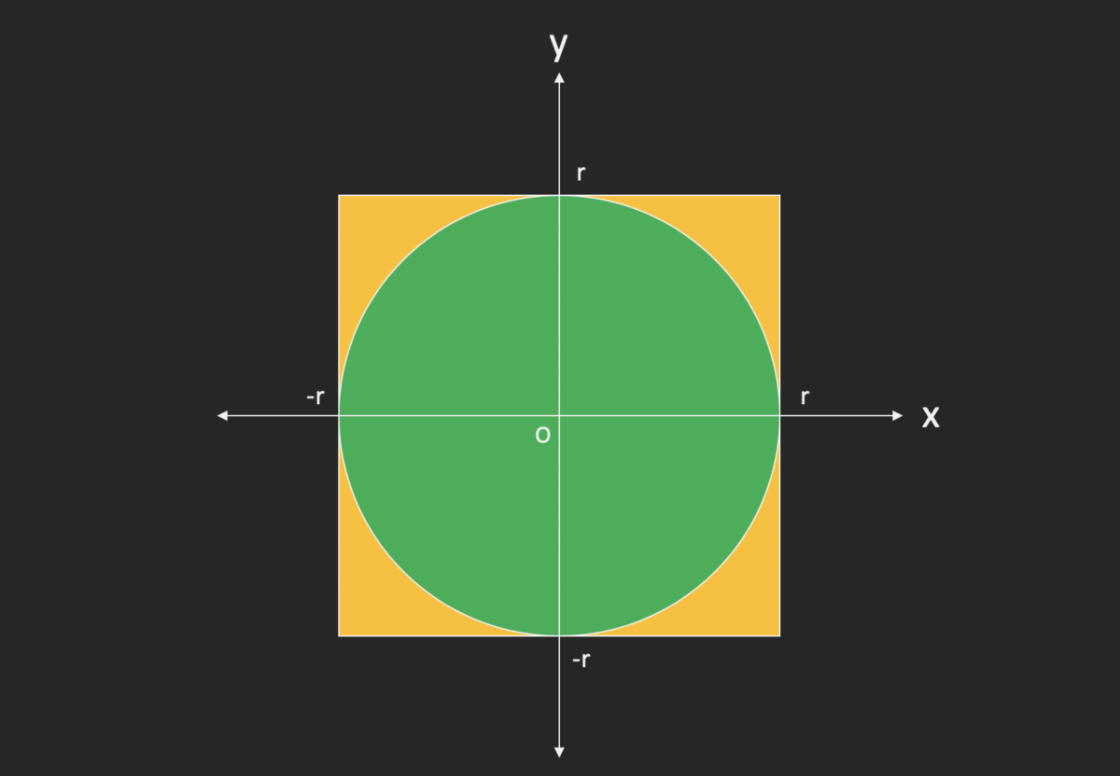
Sの中にある点の数を「s_dot_num」、Cの中にある点の数を「c_dot_num」とおくと、
(c_dot_num) / (s_dot_num)
= Cの面積 / Sの面積
= (π * rの2乗) / (2r)の2乗
= π / 4
となることから、
π = 4 * (c_dot_num) / (s_dot_num)
と定義ができました。
あとは、c_dot_numとs_dot_numをそれぞれ求めることができれば、πの値を推定できます。
(rの値は関係ないようですね)
コード
今回はPythonで書きました。
# 一辺の長さが1の正方形内にランダムにドットを打ち、円周率を推定する。
import random
def estimate_pi(n):
c_dot_num = 0
s_dot_num = 0
for _ in range(n):
x = random.uniform(0, 1)
y = random.uniform(0, 1)
distance = x**2 + y**2
if distance <= 1:
c_dot_num += 1
s_dot_num += 1
pi = 4 * c_dot_num / s_dot_num
return pi
if __name__ == '__main__':
print('dotが100個のとき、円周率は{}'.format(estimate_pi(100)))
print('dotが1000個のとき、円周率は{}'.format(estimate_pi(1000)))
print('dotが10000個のとき、円周率は{}'.format(estimate_pi(10000)))
print('dotが100000個のとき、円周率は{}'.format(estimate_pi(100000)))
実行結果
おおよそ3.141前後になりました。
試行回数n(=dotを打つ回数)を増やすにつれて、精度が高まっています。
まとめ
今回は、乱数を用いて円周率を推定してみました。
学術的には、乱数を用いて何らかの値を見積もる手法を「モンテカルロ法」と呼ぶそうです。
コード自体は決して難しくはないのですが、初めて知った時に「そういうアプローチがあるのか!」とテンション上がったので備忘録として。
